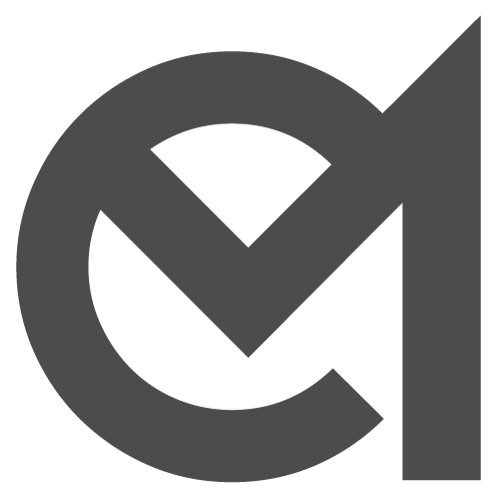What Is a Substance Use Disorder?

The APA, or the American Psychiatric Association, provides guidelines to help spot substance use disorders.
SUDs, or substance use disorders, are acknowledged by the NIMH or The National Institute of Mental Health as conditions where people can’t regulate their use of substances, whether they are legal, like alcohol and cigarettes or illicit drugs.
Identifying the criteria for substance use disorders enhances the effectiveness of diagnosis and treatment, improving the prospects for long-term recovery from addiction.
You don’t need to meet all eleven criteria to be diagnosed with a substance use disorder. It’s possible to have multiple SUDs at the same time.
The severity of a substance use disorder and the right treatment program are determined by how many of the criteria are met.
Diagnosing Substance Use Disorders
Healthcare experts utilize established, formal guidelines to identify substance use disorders.
The APA, or American Psychiatric Association, created the DSM, or Diagnostic and Statistical Manual of Mental Disorders. This manual helps mental health professionals in the United States diagnose and treat disorders consistently.
Before the DSM, the lack of a national standard for diagnosis led to overlooked and inaccurate diagnoses.
The DSM is seen as the main source for recognizing, documenting, diagnosing, and treating behavioral and mental health disorders.
Updates and revisions to the DSM occur only when the American Psychiatric Association collectively agrees it needs modernization or expansion to encompass new health insights.
The changes are based on research and studies approved by APA members after discussions.
The most recent edition is the fifth, known as the DSM-5, released in 2013. The DSM-5 has new criteria for substance use disorders, improving on the DSM-IV from 1994. It covers more areas and is more up-to-date.
The DSM-5 helps diagnose substance misuse and abuse disorders and provides current treatment recommendations.

DSM-5 Substance Use Disorder Criteria
The DSM-5 includes specific criteria, including symptoms and behaviors, to assess substance use disorders and determine their severity.
The seriousness of a substance use problem depends on the number of symptoms you exhibit, which can range from mild to severe. Honesty with your evaluator is crucial for obtaining an accurate diagnosis and suitable treatment plan.
Meeting two or more criteria within 12 months is clinically indicative of a substance use disorder. The DSM-5 outlines 11 criteria for such disorders, including:
- Cravings – Experiencing intense desires for the substance, often consuming your thoughts
- Tolerance – Needing increased amounts of the substance to achieve effects once reached with smaller amounts
- Using larger amounts for longer periods – Consuming the substance in greater quantities or over longer times than intended
- Giving up activities – Ceasing to engage in or avoiding leisure activities and hobbies to use the substance
- More time spent on usage – Devoting a substantial amount of time to obtaining, using, or recovering from the substance
- Neglecting responsibilities – Not meeting duties at work, school, or home because of substance involvement
- Social or personal conflict – Persisting in substance use despite ongoing social or personal issues resulting from it
- Health consequences – Encountering health problems directly linked to substance use but continuing usage
- Risky consumption – Using the substance in situations that pose dangers.
- Struggling to cut down – Failing to lessen or stop using the substance successfully
- Withdrawal symptoms – Facing withdrawal effects when trying to decrease or discontinue use
Substance Use Disorder Severity Levels
Healthcare professionals use the DSM-5 to assess the severity of a substance use disorder. This is done by examining how many criteria are met and how frequently they occur.
- Meeting one of the eleven criteria suggests a potential risk of developing a substance use disorder
- Fulfilling two to three criteria signifies a mild substance use disorder
- Meeting four to five criteria points to a moderate substance use disorder
- Six or more criteria met denote a severe substance use disorder
The National Institute on Drug Abuse (NIDA) views the disease of addiction as the most intense degree of a substance use disorder.

The 8 Types of Substance Use Disorders
The DSM-5 treats each substance use disorder distinctly, even in cases where an individual is addicted to several substances simultaneously.
The DSM-5 identifies eight varieties of substance use disorders, namely:
- Alcohol Use Disorder
- Opioid Use Disorder
- Stimulant Use Disorder
- Cannabis Use Disorder
- Hallucinogen Use Disorder
- Inhalant Use Disorder
- Tobacco Use Disorder
- Sedative Use Disorder
- Hypnotic or Anxiolytic Use Disorder
Many individuals facing substance use disorders need professional assistance to control and surmount these challenges. Identifying specific substance use disorders enables healthcare providers to administer appropriate treatments.
Treatment for Substance Use Disorders at White Oak Recovery Center
If you or someone you know is having trouble with substance use, there is help available that is effective and compassionate. Recognizing and accepting that substance use disorders are just like other chronic illnesses is the first step. Without intervention, they will progressively deteriorate and can become life-threatening.
Regardless of the stage of your drug or alcohol addiction, improvement doesn’t require further decline. You can act now to begin healing and mend the harm caused by substance abuse. Assistance is available; we’re here to support you.
At White Oak Recovery Center, we make a plan just for you with treatments and therapies to help with rehab. We aim to provide you with a plan that meets your specific needs and enables you to achieve your recovery goals. Our experts will help create a treatment plan that works for you and meets your unique needs. We are committed to providing you with the best possible care and support throughout your recovery journey.
Our residential treatment program offers a serene setting with chef-prepared meals on-site. This place of healing helps you get better and learn the skills you need for a successful recovery journey.
Our caring treatment experts are here to help you and answer any questions you have as you go through this process. Reach out today to embark on the initial steps towards recovery and flourishing.

Am I covered for addiction treatment?
Your insurance may cover treatment. Call now for an entirely free and confidential assessment. Recovery starts with a phone call.

- “Substance Use and Co-Occurring Mental Health Disorders.” National Institute of Mental Health, Jun. 2024.
- “Substance Use Disorders.” Substance Abuse and Mental Health Services Administration, Jun. 2016
- Hasin, Deborah S., et al., “DSM-5 Criteria for Substance Use Disorders: Recommendations and Rationale.” Mechanisms of Psychiatric Illness, Aug. 2013.
- Mclellan, Thomas A., “Substance Misuse and Substance Use Disorders: Why do They Matter in Healthcare?” Transactions of the American Clinical and Climatological Association, 2017.
- Alozai, Ubaid Ullah and Sandeep, Sharma, “Drug and Alcohol Use.” StatPearls: National Library of Medicine, Jul. 2023.
Medical Disclaimer:








